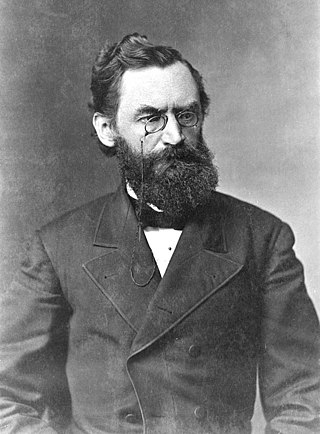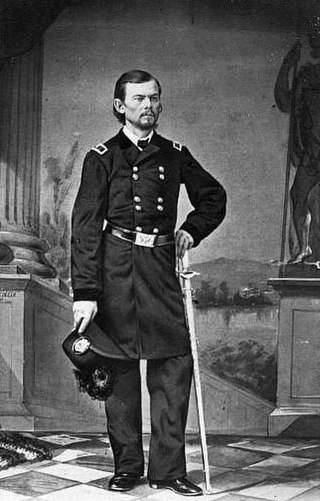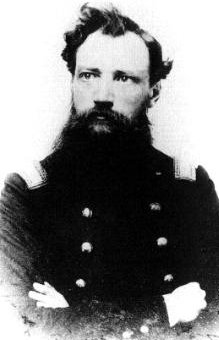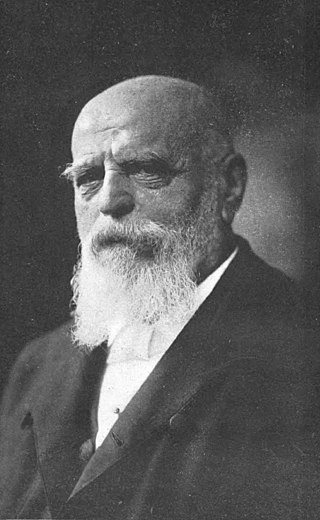
Carl Schurz was a German revolutionary and an American statesman, journalist, and reformer. He migrated to the United States after the German revolutions of 1848–1849 and became a prominent member of the new Republican Party. After serving as a Union general in the American Civil War, he helped found the short-lived Liberal Republican Party and became a prominent advocate of civil service reform. Schurz represented Missouri in the United States Senate and was the 13th United States Secretary of the Interior.

Gustav Struve, known as Gustav von Struve until he gave up his title, was a German surgeon, politician, lawyer and publicist, and a revolutionary during the German revolutions of 1848–1849 in Baden, Germany. He also spent over a decade in the United States and was active there as a reformer.

A Burschenschaft is one of the traditional Studentenverbindungen of Germany, Austria, and Chile . Burschenschaften were founded in the 19th century as associations of university students inspired by liberal and nationalistic ideas. They were significantly involved in the March Revolution and the unification of Germany. After the formation of the German Empire in 1871, they faced a crisis, as their main political objective had been realized. So-called Reformburschenschaften were established, but these were dissolved by the Nazi regime in 1935/6. In West Germany, the Burschenschaften were re-established in the 1950s, but they faced a renewed crisis in the 1960s and 1970s, as the mainstream political outlook of the German student movement of that period started learning more towards the left. Roughly 160 Burschenschaften exist today in Germany, Austria and Chile.

Franz Sigel was a German American military officer, revolutionary and immigrant to the United States who was a teacher, newspaperman, politician, and served as a Union major general in the American Civil War. His ability to recruit German-speaking immigrants to the Union armies received the approval of President Abraham Lincoln, but he was strongly disliked by General-in-Chief Henry Halleck.

Alexander Schimmelfennig was a Prussian soldier and political revolutionary. After the German revolutions of 1848–1849, he immigrated to the United States, where he served as a Union Army general in the American Civil War.
A Latin settlement is a community founded by German immigrants to the United States in the 1840s. Most of these were in Texas, but there were "Latin Settlements" in other states as well. These German intellectuals, so-called freethinkers and "Latinists", founded these communities in order to devote themselves to German literature, philosophy, science, classical music, and the Latin language.
German-Americans were the largest ethnic contingent to fight for the Union in the American Civil War. More than 200,000 native-born Germans, along with another 250,000 1st-generation German-Americans, served in the Union Army, notably from New York, Wisconsin, and Ohio. Several thousand also fought for the Confederacy. Most German born residents of the Confederacy lived in Louisiana and Texas. Many others were 3rd- and 4th-generation Germans whose ancestors migrated to Virginia and the Carolinas in the 18th and early 19th centuries.

Louis Blenker was a German revolutionary and American soldier.

Christoph Joseph Rudolf Dulon was a pastor of the Reformed Church (Calvinist) and a socialist agitator in Bremen; later he was an educator in the United States.

The Struve family were a Baltic German noble family of Eastphalian origin and originated in Magdeburg, the family produced five generations of astronomers from the 18th to 20th centuries. Members of the family were also prominent in chemistry, government and diplomacy.
Gustav Nikolaus Tiedemann was a German soldier who joined the revolutionaries during the Revolutions of 1848 in Germany, eventually becoming the commander of the last holdout of the revolution, the fortress at Rastatt.

Friedrich Hassaurek was an American journalist and ambassador.
Der Baltimore Wecker was a daily paper published in the German language in Baltimore, Maryland. It was the object of violence in the civil unrest at Baltimore in April 1861 that produced the first bloodshed of the American Civil War.
Theodore Kaufmann was a German-born artist who worked mostly in the United States.

Herman Kiefer, also spelled Hermann Kiefer, was a physician, politician and diplomat of the United States.
Marie Bloede was an American author of German descent, who also published under the pseudonym Marie Westland.
The Baden Revolution of 1848/1849 was a regional uprising in the Grand Duchy of Baden which was part of the revolutionary unrest that gripped almost all of Central Europe at that time.
Events in the year 1906 in Germany.
Baroness Marie "Méry" von Bruiningk was a Russian Empire democrat of Baltic-German ethnicity, known for her participation in the democratic intellectual debate in the Baltic during the revolution year of 1848.
Events from the year 1848 in Germany.











